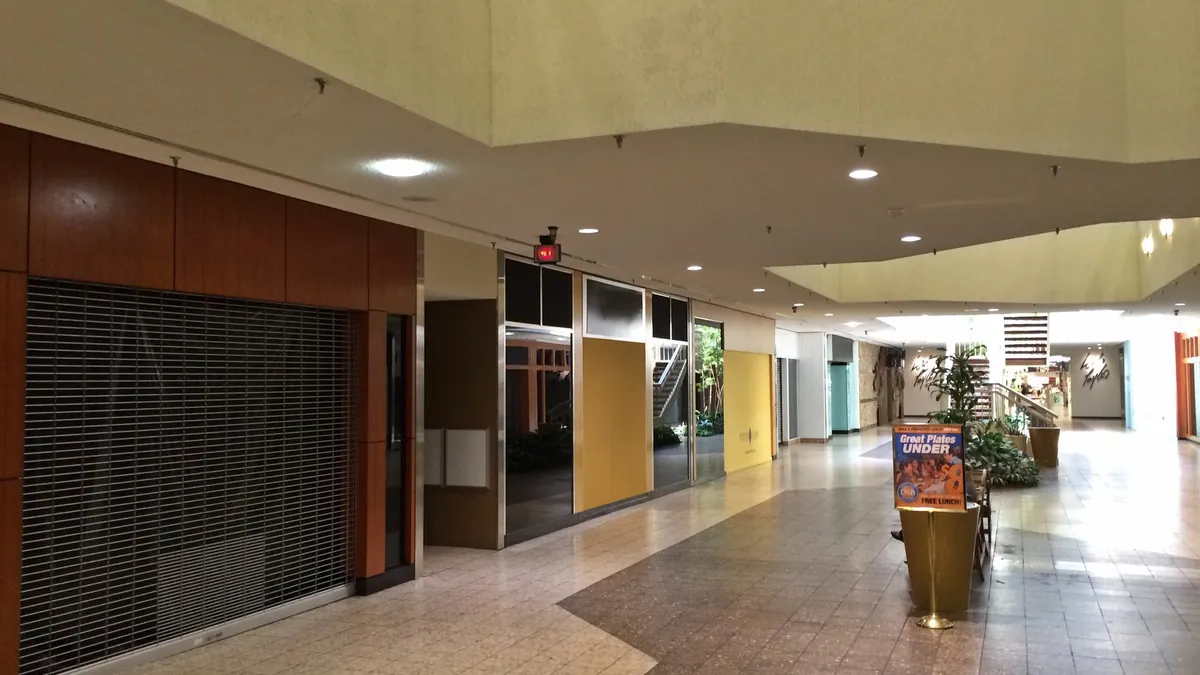Dive Brief:
- The mall vacancy rate hit 8.6% in the second quarter, up from 8.4% from the previous quarter, its highest since 2012, according to a report from real-estate research firm Reis this week. The highest rate post-recession was 9.4% in the third quarter of 2011, according to Reis.
- Strip malls are feeling the biggest hit. With 3.8 million square feet of empty space, the second quarter vacancy rate reached 10.2%. Open-air markets are suffering too — during the last quarter, vacancies in these centers increased in 55 of the 77 metropolitan areas studied by Reis.
- The liquidation of Toys R Us impacted the vacancy rates more than any other retailer in the last nine years, according to the report. The retailer officially closed its remaining stores on Friday.
Dive Insight:
The U.S. is well known for its sprawling retail properties and the over construction of stores leading up to the financial recession is coming back to haunt landlords. There is roughly 24 square feet of retail space per person in the U.S., a figure notably higher than the 16 square feet per person in Canada, the 11 square feet per person in Australia and five square feet per person in the U.K., according to a Morningstar Credit Ratings report last year.
In Reis' first quarter report, senior economist Barbara Byrne Denham said she anticipated that a number of store closures, especially from Toys R Us, would increase vacancy rates through the end of the year.
So far in 2018, there have been roughly 4,095 store closing announcements and 1,884 planned openings, according to data from Coresight Research. By comparison in the U.K., there have been 631 store closure announcements and 616 announced store opening. Toys R Us has led the year in store closures with 881, but Walgreens isn't too far behind at 600. Meanwhile Sears and Kmart, Ascena, Bon-Ton and Best Buy have all shuttered more than 250 stores, according to Coresight Research.
Over the last few years as consumer behavior has changed, retailers have had to get creative to drive traffic and fill out big-box stores. Kohl's for instance is turning to higher frequency purchases — grocery items — by adding several Aldi stores to rightsize its footprint. It has also recently added Amazon device shops. Executives said in March that the partnership with the e-commerce giant has been a boon to those stores, which saw an 8.5% bump in traffic since the program began.
Overall, malls have taken new shape and despite mass closures, many are still thriving. Well, at least A-class malls, which still reign with premier retailers and brands, as well as experiences like restaurants and entertainment. Many malls are being redesigned to serve as lifestyle centers, living spaces and even distribution centers.













